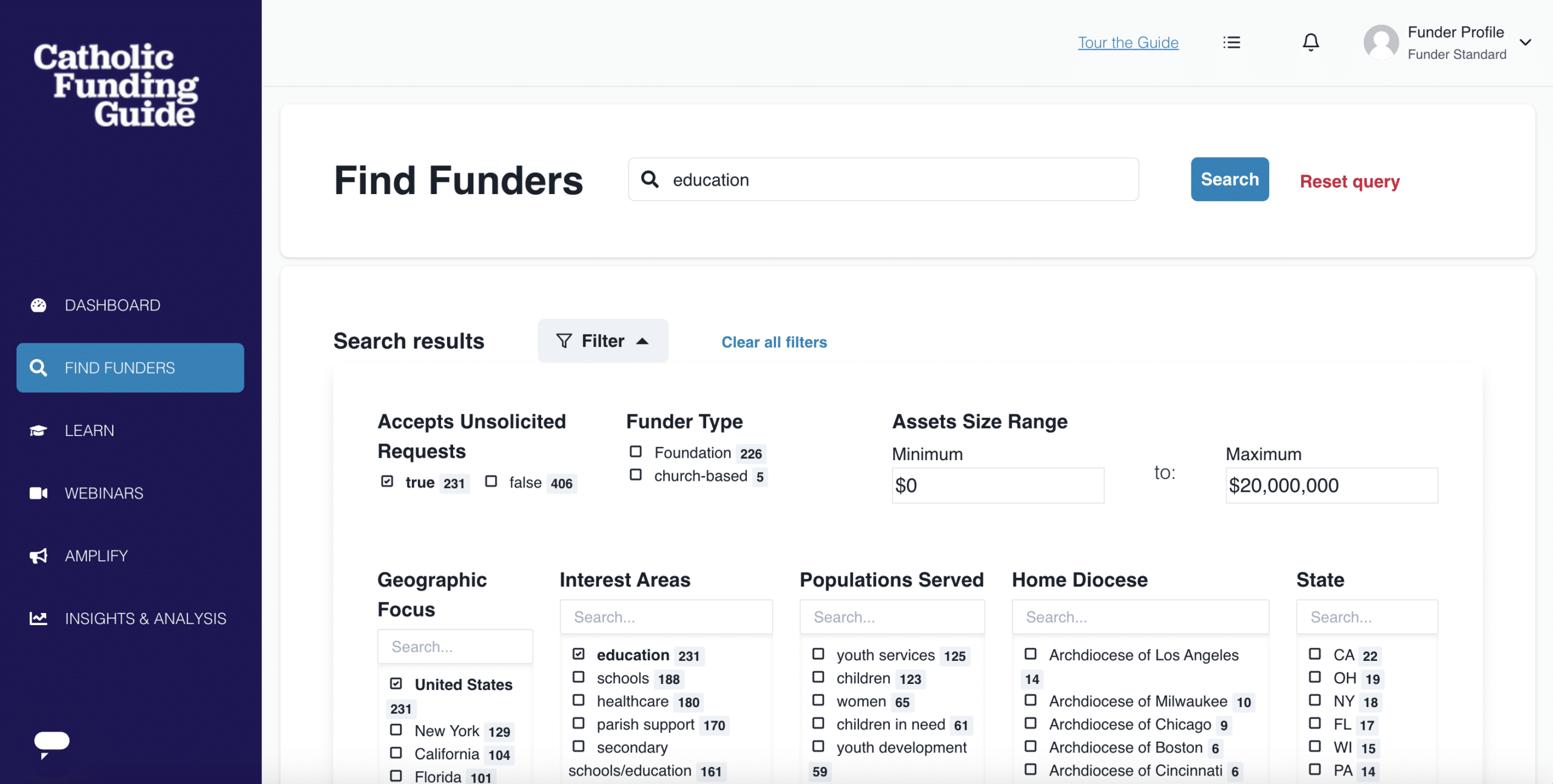What Is Online Fundraising?
Online fundraising consists of hosting an organized campaign that directs donors to give online. There are typically 3 ways you can do online fundraising:
- Host a Giving Day
- Run a specific campaign
- Always provide a way to give online, and drive people to it
The Benefits of Online Fundraising for Nonprofits
There are several notable benefits to online fundraising. Chances are, you are already familiar with many of these:
-
- Global reach. Fundraising online makes your cause accessible to a much wider audience. Anyone with an internet connection anywhere in the world can, theoretically, find out about your cause.
- Awareness. The wide reach and accessibility of the internet means you can spread more awareness more quickly about your work.
- Potential. Online fundraising opens the door to more possibilities. Options to give become easier and more accessible to more people. It’s as easy as a click or two to share your cause with others on social media, via email, etc. You can use analytics to track which of your efforts are working and which aren’t, and make adjustments accordingly.
- Good ROI. With a solid strategy in place, online fundraising can help you continually reach your giving goals. The rewards often far outweigh the initial investment of money and time.
- Easier for donors to give. Online giving is a lot easier for most people than giving by mail. By providing mobile pay, text to give, and similar options, you are removing some of the barriers to giving. Additionally, online giving makes it easy for you to utilize analytics. You can see which methods are the most popular and which methods may need some tweaking to ensure your checkout process is seamless and secure.
Online Fundraising for Nonprofits: The Top Insight to Keep in Mind for Success
In a webinar we recently hosted, our presenter, Lisa Schillace, National Director of #iGiveCatholic, shared her top tips and insights for successful online fundraising.
The point that kicked off her presentation is the cornerstone of all other online fundraising advice:
“The destination may be online, but that doesn’t mean the strategies are only online.”
All collateral should point potential donors to give online. Your efforts, however, are not limited to the internet.
Why?
As most of us have experienced, the digital world is oversaturated. Social media and email are important to utilize in your campaign, but they shouldn’t be your only channels of communication with potential donors.
Here are two simple ways to avoid adding to the oversaturation:
-
- Be intentional with your emails and social media posts. Avoid excessive posting and sending, and have a goal in mind for each communication. Daily or overly frequent social posts and emails can easily get lost in the feed or inbox — or worse, they may annoy your prospective donors to the point of unsubscribing from your list or unfollowing your organization.
- Use physical collateral in addition to digital channels. This can include a letter or postcard.
Additionally, follow best practices for all of your collateral. These are easy to find online for free, and some of your staff and volunteers can likely help with this as well.
Plan and Prepare Your Online Fundraising Plan
A successful fundraising campaign starts with a strong plan and strategic preparation. Here are some ideas to get you started:
Set a realistic goal. If you are doing a specific campaign or giving day, set a goal that is realistic and achievable. A feasibility study can help greatly with this, especially for big projects and goals.
Looking for specific tips on planning for a campaign? Listen to Episode 141 of the Petrus Development Show. During this podcast, Andrew Robinson and Rhen Hoehn discuss the details of planning for a capital campaign, including conducting a feasibility study.
Determine branding and theme early. Internally agree on a theme and branding ahead of time. This will save your team from stressful, last-minute decisions and will help you run a cohesive campaign.
Determine collateral and timeline early. When determining which communication channels and what collateral you should use, remember that a combination approach is most effective because it allows you to expand your reach to a wider audience. Consider using any or all of the following:
-
- Social media
- Postcard or letter
- Radio (especially effective in rural areas)
- Parish announcements
- Events (don’t forget to invite the media)
- Google ads (Google ad grants can help with cost)
Then, list out all the avenues you’ll be using for fundraising, and consider:
-
- What collateral do you need?
- How much time does your team need to prepare the collateral?
- What is your team’s bandwidth?
- Will you need to find volunteers or contractors to help?
Once these details are ironed out, plan a realistic timeline for events, email sends, flyers, and social media posts.
Reach out to community partners before the campaign starts. Pre-campaign is the perfect time to reach out to funders, donor advised funds, and employers. Ask for matching gifts, donated prizes, cross promotion, and peer to peer fundraising opportunities. Securing these partnerships early on will add structure to your campaign and will save you a lot of stress later.
3 Tips for Online Fundraising Success
Here are three tips that will help boost your campaign efforts to the goal or beyond.
-
- Ask for specific amounts, but go a step further. In your asks, explain the impact of each amount — for example, “$10 will feed a child for a day,” or “Your gift will directly impact our ability to help the homeless by updating our career center technology lab.” Donors are more willing to give when they can visualize the impact of their gift.
- Tangibly display giving progress. Include a thermometer or another kind of visual donation tracker on your website. Visualizing progress can provide great momentum to new donors to help move the needle closer to the goal, and can help current donors feel gratified that they gave and helped your organization get closer to a goal that is important to you both.
- Minimize giving obstacles. If it’s easy to give, people will give. Don’t let a poor checkout process or a tough-to-navigate webpage be the reason you fall short of your fundraising goal. Make sure you create a simple, user-friendly process to give online. For example, the “Donate” button should be prominent on your website and emails. Enable mobile pay, which is becoming increasingly popular. At events, use a card reader so people can still easily donate electronically.
11 Giving Day Tips
When preparing for a Giving Day such as Giving Tuesday, you can follow many of the fundraising tips outlined earlier in this blog post, such as setting a realistic goal and planning your messaging schedule ahead of time. Here are 11 other insights you can utilize specifically to enhance your Giving Day outcomes.
- Code. Embed code to direct website donations to your giving day page to include them in your campaign goals. If you are not sure how to do this, you can ask your staff or volunteers if they can help.
- Track and share progress. Share your progress tracker multiple times to keep people updated and motivated. You can plan a few update emails and social media posts to do this. While you don’t want to overstaurate people’s feeds, a Giving Day has a tighter time constraint than other campaigns, so people expect and may even look for updates online.
- Offer prizes. Give away prizes to random donors at certain milestones or intervals. Plan these prizes ahead of time with your community partners, volunteers, and staff. You can include branded items in the prizes, such as a t-shirt or coffee mug with your nonprofit’s logo on it. This is a fun and relatively easy way to spread awareness about your work.
- Plan to raise your goal ahead of time. Consider raising the goal if you get very close early on. Plan for this ahead of time so you aren’t scrambling to craft messaging at the last minute.
- Secure matching gifts. It’s important to work with your community partners to establish matching gifts ahead of time. Then decide at what intervals of the campaign you will announce the matching gifts.
- Plan a social media “takeover.” Ask local businesses, organizations, or even influencers to allow your organization to “take over” their social media pages for a few hours or a day, during which time they will share posts about your work. To make it easy on them, you could craft the posts and send them the files. If they are willing to add a personal message about your organization and explain to their audience why they are participating, that can go a long way in driving support for your cause.
- Organize peer to peer fundraising. Peer to peer fundraising (sometimes referred to as P2P or team fundraising) can be especially productive for a Giving Day. Essentially, peer to peer fundraising means that individuals who support your cause will ask their peers for donations. These donations will be added to the Giving Day total. You will need special software for this that will allow you to set up a web page for each individual. This way, the donations will funnel into your Giving Day goal, and you can see which donations came from which peer. This is useful if you want to offer prizes to the individuals who bring in the most donations.
- Apply the “social proof” theory to your progress bar. Don’t start your campaign at $0; use advanced giving to kick it off. People are more likely to donate if they see that others have already given. If you are familiar with the “silent phase” of a capital campaign — where you focus on securing major gifts before the campaign is public — then you are already familiar with the social proof principle. Ask some of your major donors ahead of time to contribute to the Giving Day goal, and make sure those numbers are reflected in the progress tracker when you kick off the campaign.
- Promote your campaign a week or so ahead of time. Before your selected Giving Day, build some excitement around the event by teasing it on your channels of communication. Send an email, mail a postcard, share a social post, and hang flyers. The idea is to prime your audience so they can make a plan to give.
- Choose Giving Tuesday. While there are many options when it comes to choosing a Giving Day, your organization should take advantage of Giving Tuesday. According to Lisa Schillace, National Director of #iGiveCatholic, Giving Tuesday is the most charitable day of the year. In her words: “If you’re not asking, you’re not getting.”
- Run two Giving Days if you want. If it fits with your budget and your goals, you can most definitely run two Giving Day campaigns per year. Just avoid running them back to back, or your audience may experience donor fatigue.
Thank Donors & Recap the Campaign
Whether this was your first-ever Giving Day or your tried-and-true annual appeal, it’s vital to thank your donors sincerely and share the campaign results.
Here are four ways to share your gratitude:
- Send specific thank you messages, such as emails that kick out after someone donates online, and thank you texts after a mobile donation.
- Create a thank you message on the website that goes live after the progress tracker reaches or exceeds the goal.
- Add a thank you message to your social media pages. You can pin the post for a few days so anyone who checks back later will see it immediately.
- Send a generalized thank you and campaign summary email to your entire list after the campaign.
In all your end-of-campaign messages, be sure to emphasize both the donors’ participation and the amazing impact you are able to now achieve together. For example: “Thanks to your overwhelming generosity, we exceeded our goal by $10,000. Now, we are able to provide affordable housing to hundreds of disabled veterans and their families.”
One Last Piece of Advice for Online Fundraising
The recap and thank you isn’t quite the end. Gather your team for a meeting to discuss what went well, what didn’t, and what might work even better in the future. This can give you a solid start on your next online fundraising campaign.
About #iGiveCatholic
From the #iGiveCatholic website:
#iGiveCatholic is a bishop-led initiative in collaboration with the United States Conference of Catholic Bishops and dozens of individual dioceses to bring the Catholic community together to inspire and support generosity. #iGiveCatholic is an independent 501c3 organization that runs the annual U.S. Catholic Church’s giving day — #iGiveCatholic on GivingTuesday — as well as the #iGiveCatholic Together platform which hosts year-round online giving for Catholic organizations as well as Catholic giving days outside of GivingTuesday.
Subscribe for full access to the webinar with Lisa Schillace and all of our past webinars, plus access to a database of 2100 funders with a history of supporting Catholic causes. Streamline your fundraising efforts today.



